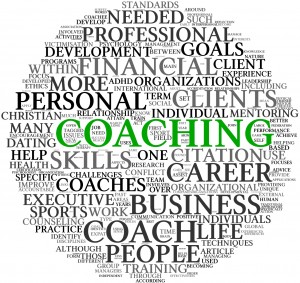
Otto Scharmer points out rightly that a new model of communication is needed, involving all stakeholders and being multilateral. A link needs to be created between all actors in society and economy, consumers to producers, leaders to staff etc. Many parties should join in the conversation, breaking up silos, sharing and opening up in dialogue. Being open and transparent will enable new ideas to emerge and this new connection will be far more effective than any extrinsic, monetary motivation and bonus. Think about it! Join me for a new journey in communications: a mindful one! Jenny
Category: Communication

Effective Communication: no need to be born with it!
“Communication is a skill that you can learn. It’s like riding a bicycle or typing. If you’re willing to work at it, you can rapidly improve the quality of every part of your life.” – Brian Tracy
Even though communication skills are so important to success in the workplace, there are many individuals who find these skills to be a stumbling block to their progress. They struggle to convey their thoughts and ideas in an accurate manner, making it difficult to move forward and nearly impossible to lead well. Things even get more complicated when communication happens between actors of different cultures through times zones and maybe even virtual means of communication.
However, there is hope for anyone who finds communicating to be difficult! These skills can be practiced and learned. It takes learning about how communication works, how to communicate exactly what it is you want to say, what mode of communication is best, and what factors are influencing the ability for you to send and receive messages with acumen.
Leaders and staff have to first understand the theory and best practices of what effective communication actually is about; then, through role plays and practical examples as well as case studies directly taken from their work environments, they should get a feel about how they communicate (verbally and non-verbally) and how others are perceiving their efforts.
Finally, written communication is a topic on its own and should be looked at separately: knowing what happens in your body when receiving unwanted mails, practicing empathy, and responding mindfully; truly necessary ingredients for any effective communication in the office and elsewhere!
Want to know more? Looking forward to hearing from you,
Jenny
Ever wondered how to become better at presenting/speaking?
Usually public speaking and presentation workshops start by teaching you a concrete technique or style to enable you to engage your audiences followed with some practice and recordings. The objective in these kinds of workshops is essentially to show you how to put a strong message together and deliver it effectively to your audience. While these techniques certainly help, there is one other aspect that is overlooked many times: your engagement and connection with the audience actually begins before you have even spoken your first word!
But before getting to a mindful way to present and speak in another post, let me give you some theory and hints from speech and communication studies, that will help you navigate through the process of preparing what you will say (in distinction to how you will be and how you will speak/interact)
One helpful and well-used method to organise presentations for maximum impact is called Monroe’s Motivated Sequence which was developed in the 1930s by Alan Monroe, a speech professor at Purdue University (Indiana, US).
He developed a five-step process designed to persuade an audience:
1. Calling attention to a problem
As part of the introduction: get the attention of your audience! Use storytelling, humor, a shocking statistic, or a rhetorical question – anything that will get the audience to sit up and take notice.
2. Demonstrating a need
Convince your audience there’s a problem. The audience must realise that what’s happening right now isn’t good enough – and it needs to change. You want them to become uncomfortable and restless, and ready to do the “something” that you recommend.
3. Satisfying that need
Introduce your solution. How will you solve the problem that your audience is ready to address? This is the main part of your presentation. It will vary significantly, depending on your purpose.
4. Visualizing the benefits
Describe what the situation will look like if the audience does nothing. The more realistic and detailed the vision, the better it will create the desire to do what you recommend. Your goal is to motivate the audience to agree with you and adopt similar behaviors, attitudes, and beliefs. Help them see what the results could be if they act the way you want them to. Make sure your vision is believable and realistic.
5. Calling for action
Your final job is to leave your audience with specific things they can do to solve the problem. You want them to take action now. Don’t overwhelm them with too much information or too many expectations, and be sure to give them options to increase their sense of ownership of the solution. This can be as simple as inviting them to have some refreshments as you walk around and answer questions.
Stay tuned for more and if you are already on holidays somewhere while reading this post: ENJOY the present moment!
Jenny
Words are Windows or They’re Walls
I feel so sentenced by your words, I feel so judged and sent away, Before I go I’ve got to know,
Is that what you mean to say?Before I rise to my defense, Before I speak in hurt or fear, Before I build that wall of words, Tell me, did I really hear?
Words are windows, or they’re walls, They sentence us, or set us free. When I speak and when I hear,
Let the love light shine through me.There are things I need to say, Things that mean so much to me, If my words don’t make me clear, Will you help me to be free?
If I seemed to put you down,
If you felt I didn’t care,
Try to listen through my words, To the feelings that we share.
By Ruth Bebermeyer taken from Marshall Rosenberg’s book: Nonviolent Communication, 2nd Edition, page 20.
Have you ever tried out Coaching or Counselling services?
I have! Long before I became a professional coach myself and when I was still living in Canada, I had the pleasure of closely working with an excellent coach, who helped me quite a lot on my professional path, navigating the stormy waters of life in an international organization. 
As a matter of fact, I decided to become a coach myself back in 2007 as I had been constantly training and mentoring people in global settings across the globe. Then living in Zurich, I began looking out for an adequate and professional school as already back then many people called themselves ‘coach’ without really having followed a thorough education (even without having ever coached anybody)!).
Two years, many coachings, supervisions, sessions and a dissertation plus Swiss level exam later, I finally had my credentials in hand. Naturally, being myself and international chameleon and speaking/writing many languages, my specialty became coaching/counselling in intercultural and global settings. Expatriates, foreigners living in or planning to move to a certain country, professionals working in an international environment and their spouses have since then been a main focus of interest.
In addition, practicing mindfulness, and related techniques since many years, I am bringing this knowledge into my day-to-day work. It really is amazing how self-awareness, openness and non-judgment enable you to deal with differences in a very effective way. Especially, as uncertainty is a more or less persistent companion nowadays, leading to stress and ambiguity, mindfulness techniques brought into coaching and linked to dealing with intercultural issues and situations of difference are a powerful tool that everybody can learn.
If you are:
- Dealing with a challenging situation in your career or at home
- Settling into a new environment, be it a different culture or other
- Working in an international environment
- Planning to move abroad or to another region soon
- Dealing with uncertainty, stress, ambiguity
- Looking for help and guidance on your way forward
- Looking for personal growth and development
- …
Coaching/Counselling can support you on your journey. You are not alone and nobody knows better than yourself how you are feeling and which way to go. You might simply need some clarity in your thoughts and insights as well as a fresh look at your issues. Everybody can grow and you might learn things about yourself that you would not have expected. Coaching really is for everybody and the various tools and resources can have incredible results. Be it face-to-face or online, you are the architect of your own life!
Register today and get 50% off your first 1 hour trial coaching session (online or face-to-face if you live in the French-speaking part of Switzerland)! Prices usually start at 150 CHF/hour and can be adapted if you are a student, unemployed, with an NGO or still in training and the offer is valid until the 11th of May 2014. Once registered you will receive all details by email and will then be able to decide if you want to take advantage of the offer or not (the offer is valid for the first 20 subscribers).
Looking forward to hearing from you!
Jenny

I found this very interesting quote today:
“An expat is often someone who knows little about his own people he spent a long time with, but thinks he knows everything about the foreigners he has spent a short time with.” (T. Crossley)
Food for thought!
Teaching in an intercultural context
Two days of teaching international marketing for Master’s students from all over the world in Caen have made me realise important things:
- Being able to share my experience with the next generation of international managers is fantastic and I find, very rewarding;
- Seeing different cultures respond differently to cases, questions etc. is always a great learning and extremely enriching;
- Through education we can ensure that people view each other with different eyes. Once returned to their home countries, these impressions and learnings will stay and shape the quality of their future relationships.
Thank you to my students for a great time, and all the best for the future! Jenny

Are you new in Switzerland?
Have you ever found yourself living or working for a longer period of time in a country different from your own? If so, you will certainly have felt something like:
- Uncertainty as you don’t exactly know what is waiting for you in the new environment
- Anxiety concerning your ability to deal with all of the new impressions and tasks in an efficient manner simultaneously
- Excitement because of all the interesting aspects of your new life although this can quickly turn into a feeling of being overwhelmed
You will almost certainly also have had a lot of questions even more so when you moved to the new location with your family. If you were lucky, you had something called an ‘expat package’ where competent people in the target country took you by the hand and showed you all you needed to know. Nowadays however, these packages are either non existent anymore (as you are more likely to get a local contract even as an international hire) or somewhat reduced so that you still need to do many things on your own.
Having lived in and moved to many foreign countries myself, I very well know what it is like and how you might feel. As a multilingual coach and consultant, I am more than happy to help you over the hurdles and accompany you on your journey, so that it will be an enjoyable experience for you and for your family.
Contact me today for a non-binding offer!
In addition, if you are reading this and you happen to be moving to Switzerland or just arrived in the country, please join me at the Welcome Event of International Link, the non-profit organisation created by the Chamber of Commerce of the Canton Vaud to facilitate the integration of foreign businesses and international employees into the local environment. The event will be held centrally in Lausanne on the 1st of May.
The goal of the Welcome Day is to officially welcome international newcomers and to get them acquainted with the Lake Geneva region. You will receive a first introduction and I will be guiding you into the Swiss culture and its different facets.
Looking forward to meeting you there!
Strategy: an important ingredient to success!
 Many people I worked with or met, be it in the NGO world or in corporations, kept asking why time should be lost writing or even thinking about strategies: nobody ever reads them and sooner rather than later if not directly, they will find their way to the bin. The simple answer is that most of the people simply don’t understand what a strategy is and what it does. Not only is a strategy an ideal way to put your thoughts into a structured framework and to make them more tangible; no, it also gives you a powerful tool at hand that will help you sell your ideas and plans in a professional and successful manner. In addition, it will also enable you to measure whether you have reached your objectives and how or if you need to adjust your measures and tools.
Many people I worked with or met, be it in the NGO world or in corporations, kept asking why time should be lost writing or even thinking about strategies: nobody ever reads them and sooner rather than later if not directly, they will find their way to the bin. The simple answer is that most of the people simply don’t understand what a strategy is and what it does. Not only is a strategy an ideal way to put your thoughts into a structured framework and to make them more tangible; no, it also gives you a powerful tool at hand that will help you sell your ideas and plans in a professional and successful manner. In addition, it will also enable you to measure whether you have reached your objectives and how or if you need to adjust your measures and tools.
If you don’t know where you are going, how do you know when you get there?
Let me explain this to you: imagine you are asked to drive a new product launch and all you have are highly interesting and valid but loosely tied bits and pieces of your product managers, your marketing people and your engineers. How are you going to convince your customers – let alone your internal stakeholders who are first on the list – of the added value of your product if there is no thread, no thoroughly reflected and grounded path and no story?
Or how are you going to convince external donors and stakeholders to give to your organisation/association or to become active volunteers/members if you cannot show them where you are heading and what you have achieved so far and will in the future.
Well, I think it will be difficult…
Even if every single milestone you think of while writing your strategy, will confront you inevitably with new questions, issues and problems, it will only allow you to dig deeper in order to find out the true value proposition, goal or objective that will create the ‘wow’ effect in your customer’s or stakeholder’s eyes. So yes, time consuming it is, but in the end, the outcome rewards all efforts!
Let’s take a quick look at how a strategic document could be structured (only general categories are reproduced here, in practice, many more can be added of course):
1. Current Situation/Background
2. Alignment to Global or Segment Strategy
4. General Objectives (qualitative/quantitative)
3. Specific Objectives
- Long-term objectives (could be external or internal)
- Short-term objectives (could be external or internal)
4. Target Markets and Audiences
5. Analysis of competition (how are they positioned, how do they communicate?); yes, this is very important for NGOs and Associations too!
6. Communication Plan (including the appropriate communication vehicles and key messages)
7. Evaluating Success
8. Tactical calendar
9. Budget
If you follow this simple guideline involving if possible your managers, peers and other important partners within your organisation in the thought process (this obviously includes summarizing and structuring what you have received from your colleagues or reaching out to them), you will have all the pre-requisites for a successful launch, thought process, road-map, introduction or campaign. Not only will you generate the buzz and buy-in you need internally to get things done, but your external appearance on the market and with your various audiences will be a true experience and hence a success.
Let me know if you need some input for streamlining your thoughts or creatively brainstorming on the way forward. Having led many initiatives (locally and internationally) and written many strategic documents and guidelines for various industries and organisations, I am sure that I will be able to help you too!
Have an excellent start in the new week, Jenny
Social Networking and Cross-Cultural Competence
If you look at the stats below, you get a sense of understanding how important social networks have become in our lives. Interestingly, even more ‘private’ topics such as politics and religion are being discussed, even more so in countries like Tunisia, Jordan or Egypt.
Knowing how to build communities and to nurture them; more importantly, how to communicate across cultures and borders becomes an essential skill in today’s connected world. Relationships are becoming more complex as often people communicating with each other don’t necessarily have the opportunity to see themselves.
But: as I wrote in an earlier post about the components of communication, 55% of the non-verbal aspects actually contribute to the understanding of what your counterpart is saying and 38% of the paraverbal. Hence, when communicating in social networks where usually you cannot see your discussion partner, the tone of your message, character fonts, drawings, diagrams, colours, italics or highlights are extremely important.
Understanding your target audience and their culture plus choosing the right tone and message is a must when building relationships in the business world but also privately.
I am extremely happy to be able to speak about this exciting subject in London on the 21st of February. Looking forward to seeing you there and if not, please stay tuned as we will be setting up tailored webinars to follow-up on the conference around three major topics:
- Social networking across cultures and platforms
- How to use social media effectively across cultures for Internationalization, Marketing and Strategic Communication
- Using Social Media for Community Management
Jenny





